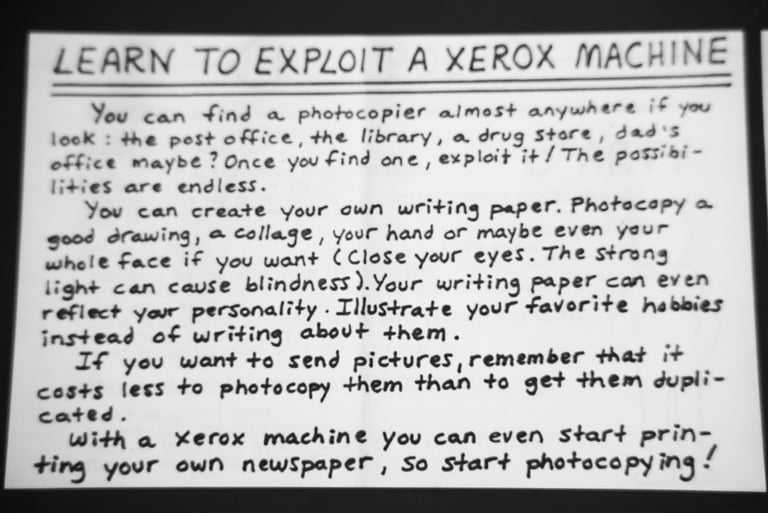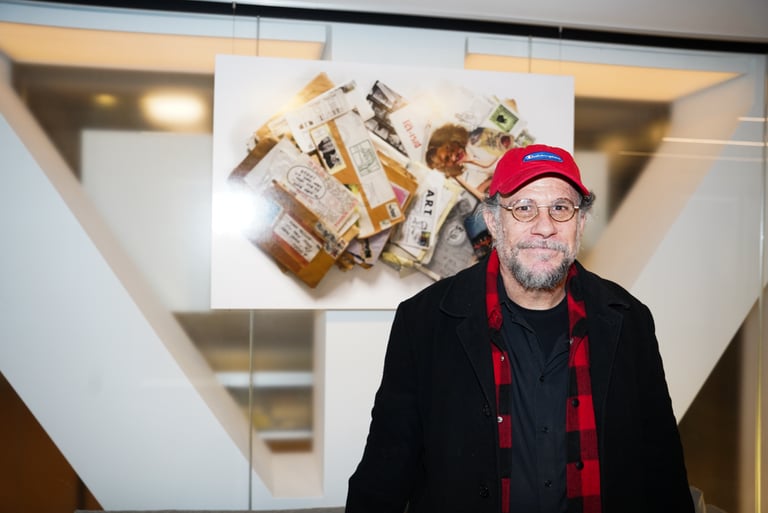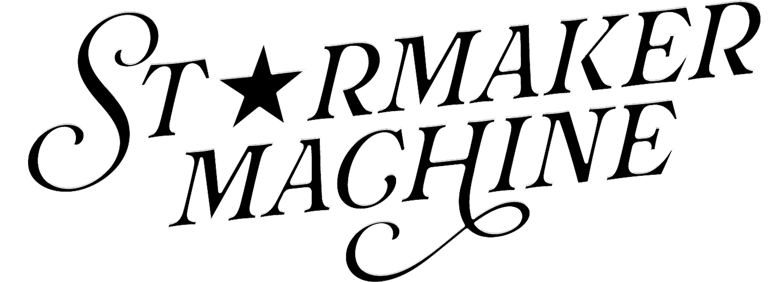How to Exploit a Xerox Machine: Mark Bloch & "PANMODERN!"
By: Milan Lazovski
ART
2/6/2025
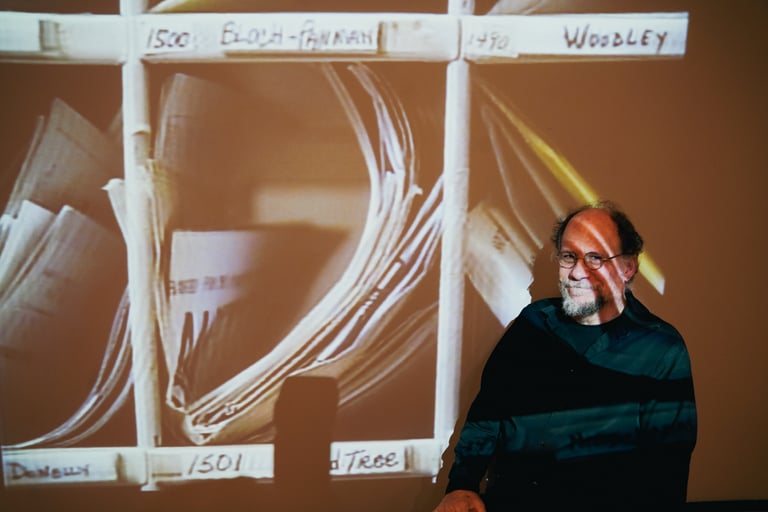

Our story begins in the historic Caffè Reggio on MacDougal Street in New York’s West Village. Incandescent lighting, indistinct chatter, and walls beautifully crammed with ancient art—a time capsule of a café. It was a cold mid-January day and the first snowfall I had experienced since moving here. Kitty and I sat in the corner and dutifully wrote our plans for the year to come, read pages of novels, and drank hot coffees. Our attention was immediately interrupted by a conversation name-dropping Beat heroes: Jack Kerouac, Allen Ginsberg, and William S. Burroughs. Our faces lit up like we conjured some sort of spirit transporting us back to a time in New York often reminisced. Unbeknownst to us, this was our first encounter with Mark Bloch—artist, writer, archivist, and proud owner of official United States Postal Office gear.
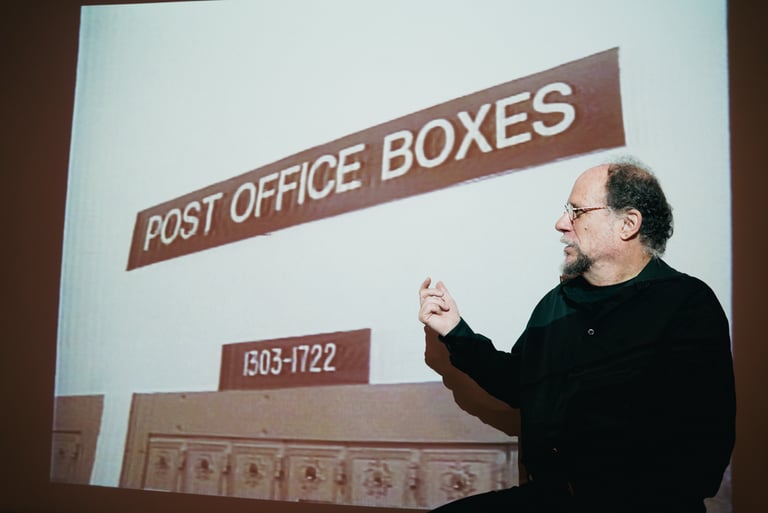

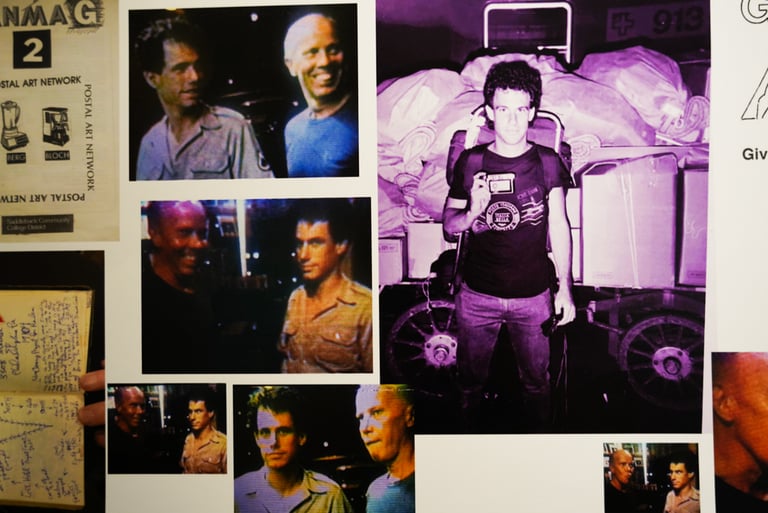

BLOCH IS HERE!
Ohio-born artist and writer, Mark Bloch is known mostly for the creation of the Postal Art Network (PAN). The organization utilizes the postal network to create and share art with people across state and country lines. The network has been expanding since 1978, connecting thousands of artists worldwide and facilitating the exchange of a wide range of work, from simple postcards, publications, and stamps to more unconventional items like sponges and socks.
From November to late January, an exhibition titled Panmodern! The Mark Bloch / Postal Art Network Archive showcased Bloch’s collected works. In partnership with NYU, the show featured a variety of displays, including film clips, photographs, postcards, stamps, and archival zines. Each display loosely categorized different aspects of his mail art, from its roots in Dadaism and its evolution with technology to its alignment with the punk movement. Complementing the exhibition, the 70th issue of Mark's zine, PANMAG, offered a more detailed guide to the works on display.
I was lucky enough to have Mark guide me through the exhibit, sharing his valuable narration and supplemental stories behind each item. Witnessing someone so fully in their element was overwhelmingly inspiring. The work features cheeky phrases—ART ISN’T SUFFICIENT, DON'T BE AN ANGEL, BETTER LIVING THROUGH RUBBER—all filled with irony and delightfully reminiscent of the Dada and Punk movements from which the work seems to have stemmed. What’s admirable about PAN is its spontaneity and open-minded philosophy—anything and everything is included and equally considered. The only guideline is that it must be shared with others, either physically or by mail. Bloch’s coined phrase sums it up best: "The address is the art."
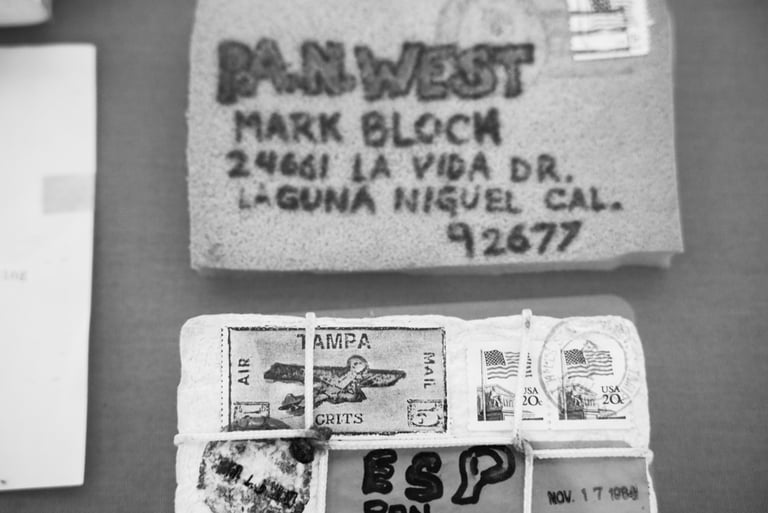

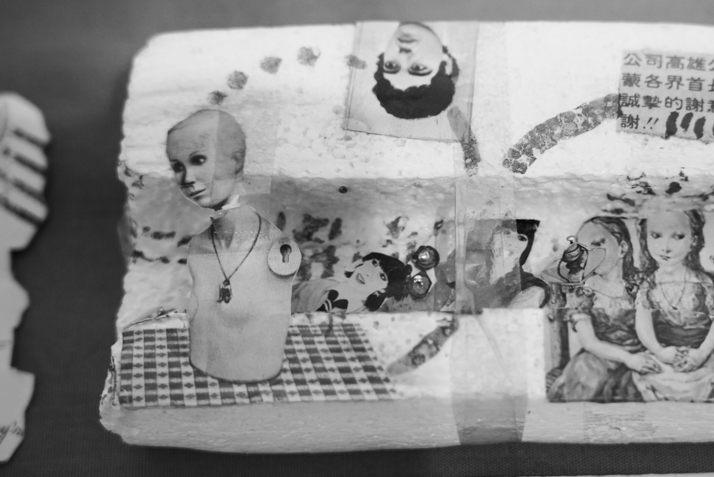

TALKIN' NEW YORK
Many things can be said about the infamous New York City—polarizing and grand. The small space it occupies on the map does not hold a candle to the importance the city holds for some of the world’s best artists. As someone who has lived here since the early 1980s, Mark makes his appreciation clear: “I love New York. I'm from Ohio… I like being from the Midwest. Ray Johnson was from the Midwest. We had that in common. We used to talk about the Midwest all the time. I'm Jewish, so I love the Lower East Side, you know, the history of all the Jewish comedians who lived down there…”
He gleefully shared stories of meeting his poet-hero William S. Burroughs during the filming of his self-titled documentary at the iconic nightclub Danceteria. Or his encounter with Patti Smith, when he was pushed down the stairs after he had insinuated she came from an "Industrial Wasteland" during an interview for his college radio show of the same name.
The desire for proximity to our muses is something Mark and I both share. I’m enthralled by these charming stories where a young artist gets to forge a one-on-one connection with the people who inspire him. It’s a special form of epiphany that comes from feeling close to them —that’s why we visit graves, museums, or, in our case, cafés. “I was totally enamored with [Caffè Reggio] for that reason, you know, I wanted to go where the Beats hung out. I lived in the East Village, so I used to see Allen Ginsberg around the neighborhood and Gregory Corso. Gregory Corso was a friend of Ray Johnson, by the way.” Our fascination with the nearly 100-year-old establishment perfectly exemplifies this philosophy and serves as just one place in New York where artists go to feel the presence of the greats.
Above all, Mark thanks NYU for their support of his work and their dedication to art preservation. With most of the real estate in the Lower East Side now being purchased by the organization, the landscape of art-making in New York has changed vastly from when Mark started. Still, the security provided by institutions like NYU brings peace of mind, ensuring that both physical art and its historical significance will endure. As Mark aptly states, “I think my stuff will survive because of them.”
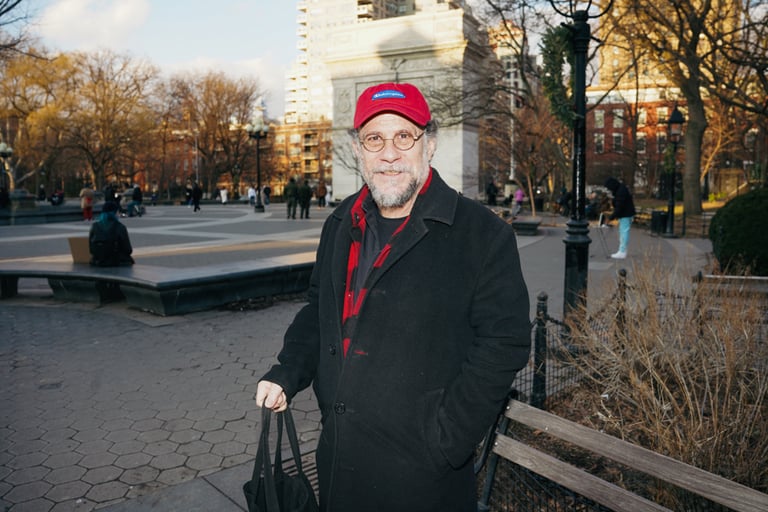

THANK THE STARS
Behind every great artist, there lies a plethora of muses that have shaped their art—and Mark is no different. Our conversation was marked by the name Ray Johnson, an omnipresent figure in Mark’s work. He credits the late Johnson with inspiring his start in the medium, along with Joan Jonas, the artist who would visit Kent State University and change Mark’s perception of creating art. I admire Mark’s dedication to crediting those who influenced his artistic development, a gesture that speaks to his respect for the roots of his craft and the importance of acknowledging those who paved the way.
However, when tasked with the quintessential Starmaker question—choosing any specific film, book, or album that has consistently shown up for him in life or artwork—I seemingly stumped Mark. Asking someone who wears his muses so proudly on his sleeve—and in his art—a question so singular proved to be a difficult task. His abundance of media, however, certainly did not disappoint. He cited The Beatles and Yoko Ono as his introduction to the avant-garde: “I was just taken by John and Yoko and what they were doing. I didn’t quite get it, so I started to investigate…” From there, he explored other realms, including the extravagant worlds of Frank Zappa, The Soft Machine, and The Fugs. His mind opened, and he began to name-drop artists and works from all realms: the comedy of Albert Brooks, the films of David Lynch, and the records Transformer by Lou Reed and Young Americans by David Bowie, respectively.
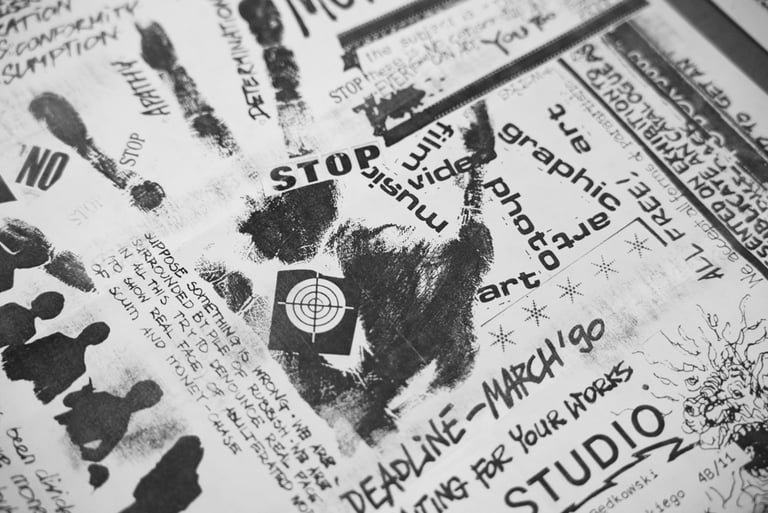

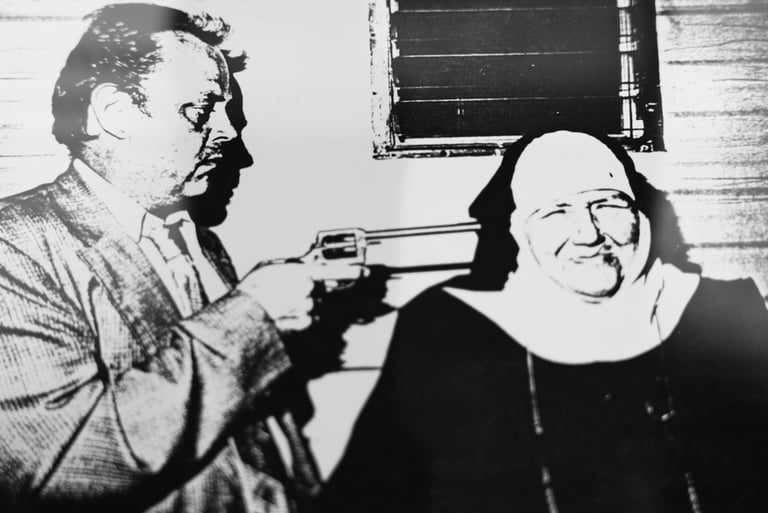

CLOSING
Serendipity and great luck are what I have to thank for meeting one of the most fascinating artists currently working in New York. Mark himself feels much like the great Caffè Reggio, where our journey began: he is filled to the brim with stories, history, art, and a deep desire to preserve. Despite his devotion to honoring his heroes, there isn’t another artist quite like him. Just like Reggio, I know his life’s work will live on forever.
